How to Translate a Video: A Comprehensive Guide
🙋♀️Have you ever been captivated by Korean dramas, American series, or other international shows, only to feel frustrated by language barriers that prevent you from fully understanding their depth? If so, rest assured—today’s tools can bridge these gaps and unlock global cultural richness. In this guide, I’ll show you how to translate videos seamlessly, enabling you to enjoy a truly immersive audiovisual experience.
📌Desktop–TranslateAI
📌 Online–Alibaba Translate
😎Whether you’re seeking educational content or exploring foreign cultures, these tools are invaluable allies. For Windows users, TranslateAI is the top choice. Its intuitive interface, efficient workflow, and robust stability make it ideal for diverse translation tasks, ensuring smooth video localization.
👀Now, please start your reading and experience them by yourself.
How to Translate a Video: A Comprehensive Guide
In today’s globalized world, video translation has become a vital bridge connecting languages and cultures. Whether it’s films, TV series, documentaries, online courses, or promotional videos, video translation breaks down language barriers, allowing global audiences to share in visual storytelling and appreciate cultural diversity. But how to translate a video? What software tools can help? Keep reading to find out!
🤔 Why do we need to translate a video?
✅ Expand Market Reach
| For businesses and creators, video translation is the key to unlocking international markets. It enables non-native speakers to grasp your content fully, broadening your brand’s influence and tapping into new audiences. |
✅ Foster Cultural Exchange
| Translated educational or entertainment videos transcend cultural and linguistic divides, fostering mutual understanding and respect among global communities and promoting harmonious cultural integration. |
✅ Enhance User Experience
| For users relying on tutorials, guides, or instructional videos, translation ensures accurate communication, eliminates language gaps, and boosts satisfaction and loyalty—strengthening your brand’s reputation. |
💡 How to translate a video?
🥇TranslateAI
A versatile intelligent translation software encompassing various translation modes such as files, images, text, Word, PDF, videos, and audio. It also comes with practical functions such as format conversion and photo restoration, enhancing overall efficiency.

◾ Step 1: Launch the software and select “Video Translation” from the main menu.
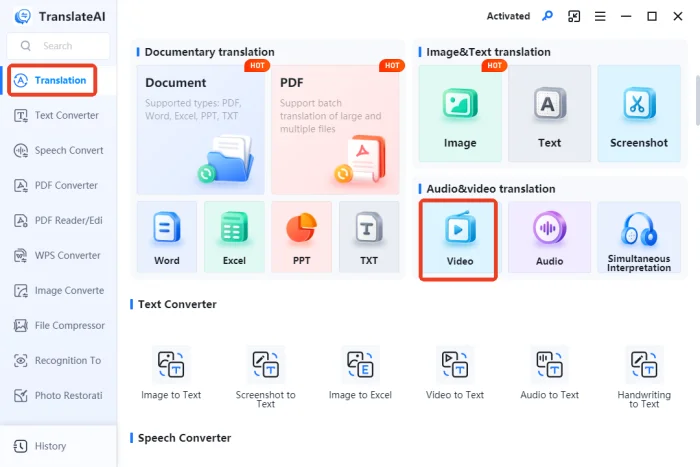
◾ Step 2: Upload your video file (max 200MB, 3 hours long, multiple formats supported).

◾ Step 3: Set the source and target languages.
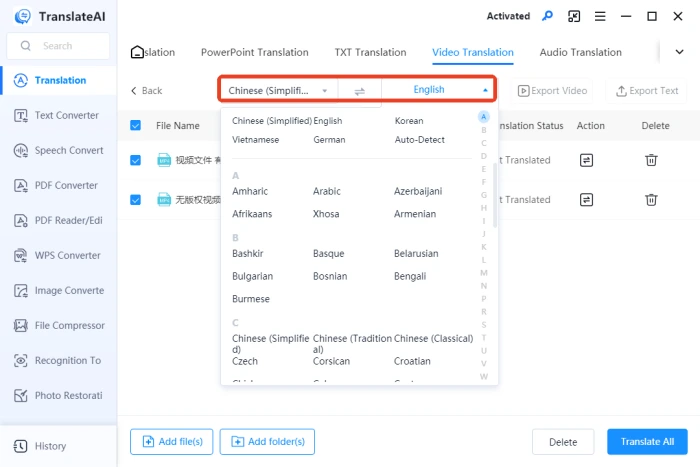
◾ Step 4: Click “Translate All” and wait for processing.
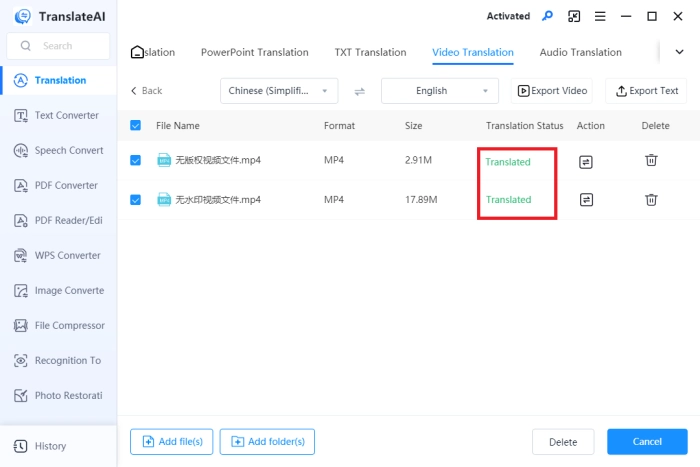
◾ Step 5: Export the translated video or text with customizable formats and paths.
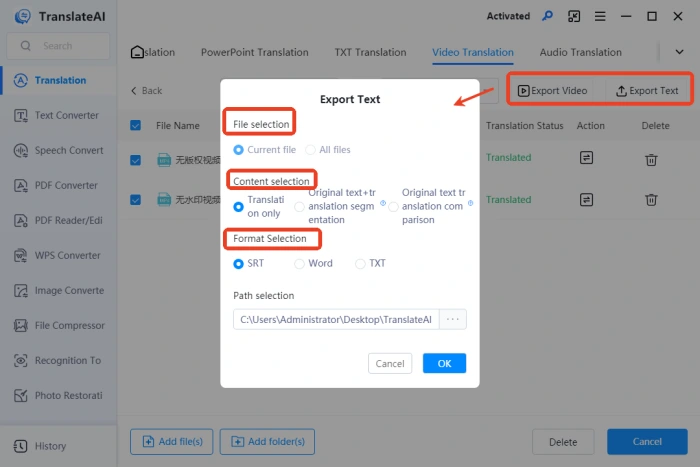
🏅Alibaba Translation
A multilingual online real-time translation platform provided by Alibaba, supporting over 200 languages worldwide, effortlessly handling text, document, image, video, and voice translations, with deep expertise in multiple vertical fields.
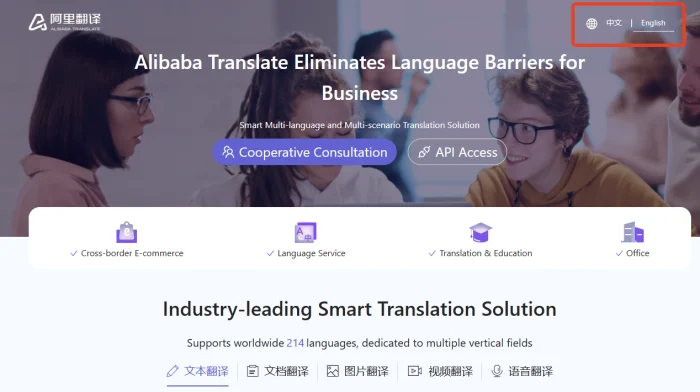
◾ Step 1: Locate and select the [Video Translation] function.

◾ Step 2: Set the language pair, with this mode currently only supporting Chinese-English translation.

◾ Step 3: Upload a single video file, with a size limit of 250MB. Download and view after automatic translation is complete.

📝Comparison and Conclusion
| 🎈Tools | 😃Pros | 🙃Cons |
|
TranslateAI
|
◽ Intuitive interface
◽ Easy to use ◽ Fast translation speed ◽ Multi-language support ◽ Can export original text and translation together |
▪ Windows-only
▪ Limited free trial availability |
|
Alibaba Translation |
◽ deeply involved in multiple vertical fields to meet diverse needs
◽ high service stability |
▪ Requires internet connection
▪ Video translation limited to Chinese and English ▪ No additional features |
🔔Tips for Video Translation
| 💗Precautions | 📍Descriptions |
| Focus on Translation Accuracy | Avoid low-level errors such as mistranslations, omissions, spelling mistakes, and typos. Be particularly cautious with professional terminology, as these can affect the understanding of video content and diminish the viewing experience. |
| Strive for Concise and Fluent Language | Video subtitles are limited by time and space, so during translation, try to simplify the language and avoid stiffness and awkwardness caused by literal translations. Flexibly adjust sentence structures and wording to ensure viewers can easily understand. |
| Consider Cultural Background Differences | During the translation process, take into account the cultural background of the target audience and make corresponding adjustments. Avoid using overly professional or obscure vocabulary and sentence structures that may cause misunderstandings, ensuring that the translation accurately conveys the original meaning. |
| Strengthen Proofreading and Correction | Even after using software tools for translation, manual proofreading is still necessary to check for omissions, mistranslations, or awkward phrases. You can also invite others or professionals to review and further improve the translation quality. |
🔎Final Thoughts
We have explored two powerful methods for translating a video. Among them, TranslateAI stands out as a top Windows solution, offers a variety of translation modes and integrates multiple features into one platform. If you need reliable video localization, I highly recommend trying TranslateAI—it’s a decision you won’t regret.



